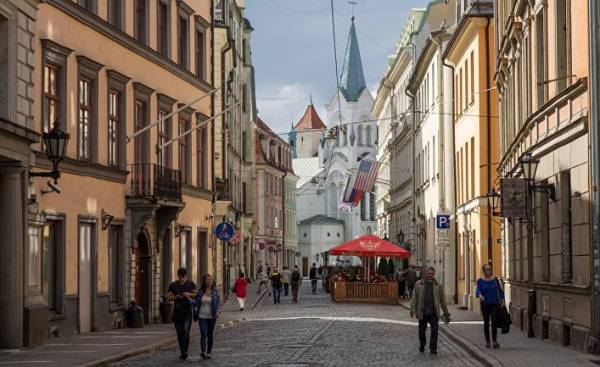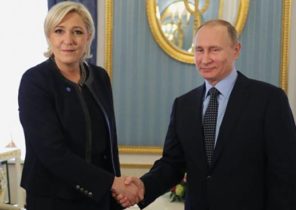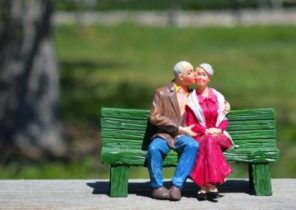
For Latvian member of EU Artis Pabriks (Artis Pabriks) 2017 has begun with a joyful opening. According to the spirit of the time, he immediately shared it with the rest of the world on Twitter. “The UN is changing the status of the Baltic States from Eastern European to North European, — he wrote, — and our place is really there.”
However, for the Ministry of foreign Affairs of Estonia in advance of the opening Pabriks was yesterday. In statistics, the Baltic region belonged to Northern Europe since 2002, said the Agency. But in a political classification, in contrast, nothing has changed; Estonia, Latvia and Lithuania, as before, belong to the Eastern European region. In Tallinn know about it exactly, because at present there just are seeking non-permanent member of the UN Security Council, which relies on this political region of Eastern Europe.
The Foundation is trust
Despite the modest practical value of the information word Pabriks convey significant content: to be considered a state in Northern and Eastern Europe — a long-standing desire of the Baltic States. Even after a quarter-century after gaining independence, he expressed the desire to finally leave the past in which the Baltic States were forced to be part of the Soviet Union.
Towards this goal, the Baltic States have achieved a lot. Vigorously the reforms have opened up for them already in 2004, the path to the EU. They endured the blows of the ruble crisis of 1998 and the European debt crisis of 2008, although overcoming them both times brought them significant losses.
If the Baltic States really want to become Northern in fact, along with economic and political changes, they must change the mentality. Scandinavians are characterised, sometimes, I would like to say, blind trust in the functioning of public institutions. The fact that “those up there” are doing everything right, is a fundamental Scandinavian feeling.
On the background of the experience of the peoples of the former Soviet Union the then state of totalitarian control, by contrast, was an enemy. From it, one could hardly expect anything positive, and there was little reason to trust him. This complex relationship between citizens and government is reflected in the joke that working people told in the days of socialism: we pretend to work and the state pretends to pay us a salary.
To create a fundamental trust between government and citizens, given the difficult legacy — no easy task. To some extent, can help the computerization of public administration. Thus, it would eliminate the kind of corruption, when civil servants make of their print personal small business. In this respect, Estonia has progressed not just more than other Central and Eastern European countries with economies in transition, but in General has become a European leader in the implementation of e-government.
However, the task of building trust goes beyond administrative aspects. First of all, Latvia and Estonia should try to incorporate into public life a substantial number of Russian-speaking minorities and residents who still have not received or do not want to get civil rights. In a Scandinavian understanding, if should have real credibility, the state should be the representative of all citizens in their needs and concerns.
If the Baltic countries want to be “North”, of course, you can ask yourself the question, do they need to do that. Although the Nordic model over the last 50 years and caused a sensation around the world, largely in a positive sense, but still need to see how it is promising in its current state. A stressful situation, such as the European refugee crisis, revealed a complex internal divisions, which go beyond the single issue of immigration. To overcome them will be possible only if the system is radically reformed.
And the welfare state offers its citizens a wide range of services that allow you to have a career, leisure and family life. Since all this is very expensive, in order that the mechanism of redistribution of income and provision of services continued to operate, it is necessary to get more citizens working and paying relatively high taxes on their income. Thus, the key to the Scandinavian model of society is the principle of equalization of income and solidarity. Inside — through a comprehensive, state-managed social policy from the outside — in the form of an open migration policy is still centered on immigration of humanitarian character.
The Problem With Scandinavia
However, over the years forgotten how to be the next step open-door immigration policy after the reception of refugees, bringing them to society distribution of wealth. Because here the system was worth and she in his way.
This is evidenced by the poor statistics on the integration of migrants into the labour market even after several years of their stay in a new country. Although part of the blame can be passed on to migrants, who, yielding to stories about generous social benefits, followed by North Europe and for which therefore still a lack of motivation to enter the labour market.
However, it is for them and not easily available. According to Scandinavian tradition, in the name of social security it is characterized by high base salaries and full protection of employees. Strong unions ensure that it stays that way. The one who doesn’t exactly fit into a model of social norms and in demand professional and language skills, as is often the case among refugees and asylum seekers are often not taken into account.
The fact that Sweden for decades was an advantage, humanitarian immigration in front of targeted labour migration, is associated with efforts to protect local workers, and this principle is still maintained. A similar pattern is happening in the housing market. Here the migrants, as well as a growing number of young locals, are excluded from the (restricted) segment, which provides social protection through regulated rent and strong protection of the rights of the tenant. In situations with these sacred cows Scandinavian model policy difficult to push the debate on the liberalization, although the need becomes more obvious.
Despite the political rhetoric about the equalisation and solidarity, in the Scandinavian system, thus, in recent years, has formed a two-class society. In Sweden this is reflected in the number of unemployed. Although the overall rate is below the EU average of 8%. But, if born in the country in search of employment are only 4 of 100 people, among the migrants is 22%.
It harms the social cohesion not only because it so disturbed the balance of the basic universal principle of redistribution. For many members of the second generation of immigrants Sweden has long been no longer the country with which they associate the hope for a better life, as did their parents, who fled from war and poverty. On the contrary, here they are faced with exclusion and lack of prospects.
Contrary to its own statements the Scandinavian welfare state over the last two decades could neither prevent nor reduce segregation. His model was able to function in a relatively closed society as it has developed before the turn of the millennia. But migration, mobility and the growing need for more flexible forms of labour are presenting today new requirements.
It also needs to keep in mind the Balts, when they look in the direction of North. Scandinavia with the state-philosophical point of view, probably can offer them something that concerns the relationship between citizens and the authorities or the idea of a public sense of solidarity. But on a practical level, however, healthy skepticism is appropriate, because the Scandinavian model itself needs to be reformed.







